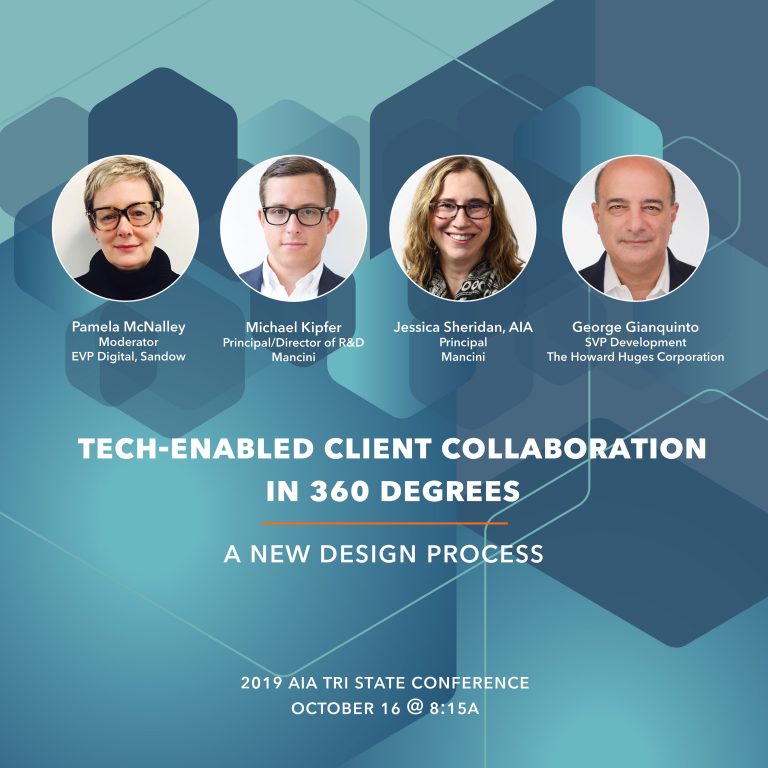Exploring The Benefits of a Tech-Enabled Client Collaboration in 360 Degrees
For decades, architects and designers have gone back and forth with their clients to come up with designs that work. Normally, consulting with clients, adjusting, tweaking plans and administrative work can bog down and delay design delivery by weeks.
“We’ve introduced the new 360 Design sessions that leverage technologies like virtual reality, video game engines and building information modeling software to build fully immersive, interactive, and responsive environments, instead of a two-dimensional plan,” says Principal Michael Kipfer, Mancini’s Director of Research and Development. “Now our clients can experience their space and work with real-time programming standards and the latest building codes to go step by step through a design with us.”
The goal of this process is to help clients make faster, more informed and confident decisions while giving the designer more tools to deliver better design for a project.
At the 2019 AIA Tri State Conference in Albany on October 18, Kipfer joined Mancini Principal Jessica Sheridan, AIA, George Giaquinto of The Howard Hughes Corporation, and moderator Pamela McNalley, Vice President of Digital at SANDOW to break down the value of this unprecedented design process and what it means for future initiatives.

